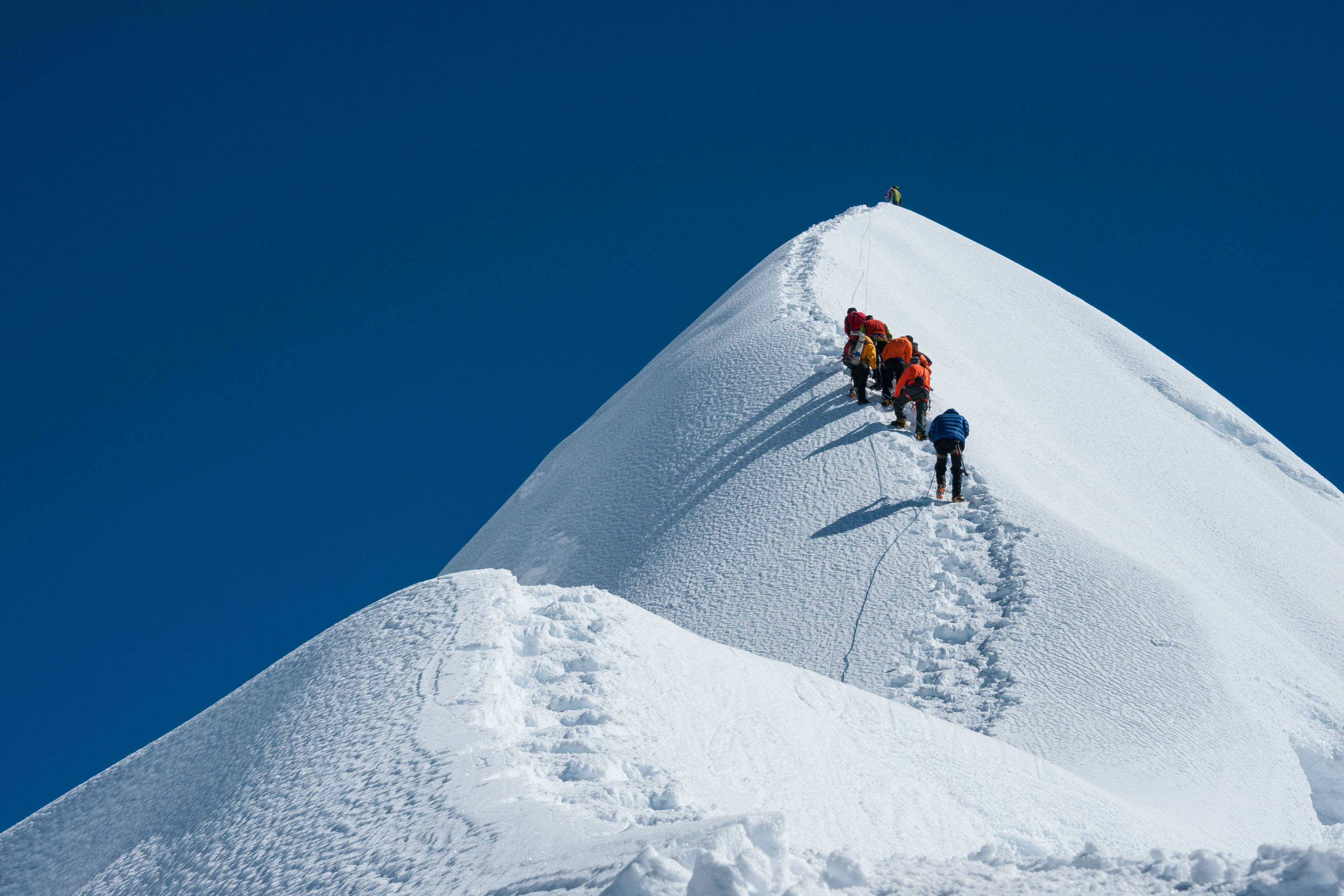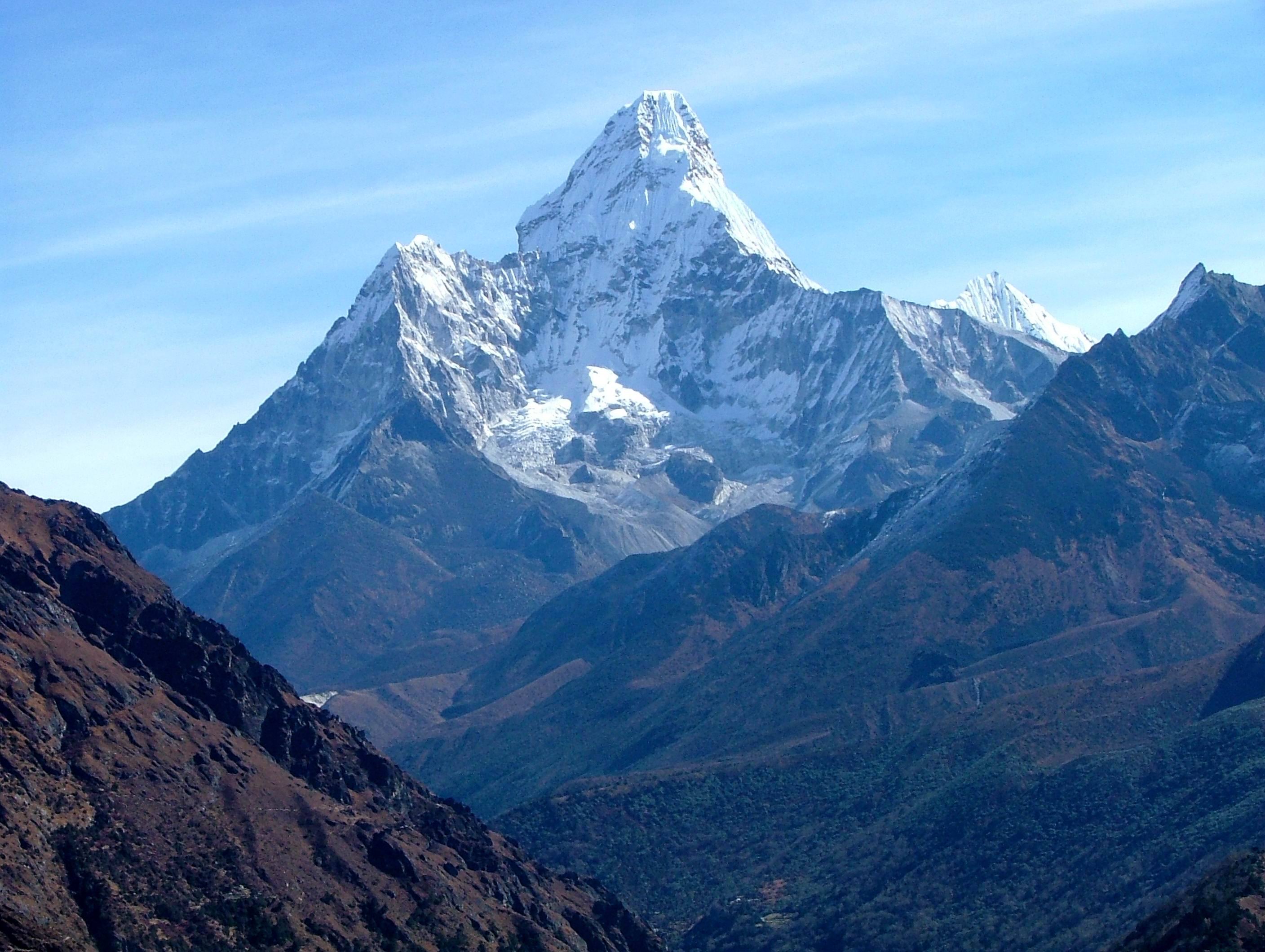Viral News | Explore around Viral and popular News this year
Conquering Everest: A Journey To The World's Highest Peak
"Conquering Everest: A Journey To The World's Highest Peak", the guidance of conquering the world's highest mountain.
FAQs
Conquering Everest: A Journey To The World's Highest Peak presents a detailed and accurate depiction of an expedition to Mount Everest. This comprehensive guidebook provides a wealth of information for aspiring climbers, covering essential aspects of the undertaking, including the physical and mental challenges, the necessary equipment and supplies, and the importance of acclimatization and proper planning. To ensure a thorough understanding of the subject matter, the book employs a serious tone and informative style, excluding first and second-person pronouns and adhering to traditional English language conventions.

New rules for climbers interested in conquering Everest | Times of - Source timesofindia.indiatimes.com
Question 1: What is the best time to climb Mount Everest?
The optimal climbing season for Everest extends from April to May, when conditions tend to be more favorable, offering climbers a better chance of success. Factors such as weather patterns, snowfall, and wind speeds are carefully considered during this timeframe to maximize safety and increase the likelihood of summiting.
Question 2: How do climbers deal with the extreme altitude?
Ascending to higher altitudes on Mount Everest requires climbers to acclimatize gradually. This involves spending extended periods at increasing elevations, allowing their bodies to adapt to the decreasing oxygen levels and minimizing the risk of altitude sickness. Climbers typically establish multiple camps along the ascent route, enabling them to rest, recover, and adjust to the changing conditions.
Question 3: What kind of physical and mental preparation is required for climbing Mount Everest?
Undertaking an expedition to Mount Everest demands both rigorous physical training and unwavering mental fortitude. Climbers embark on extensive training programs that focus on endurance, strength, and cardiovascular health. They engage in activities like high-altitude trekking, mountaineering, and rock climbing to develop the necessary physical abilities. Additionally, climbers must cultivate resilience, determination, and the ability to withstand extreme conditions and potential setbacks.
Question 4: How do climbers communicate during an expedition?
Communication on Mount Everest largely relies on radios and satellite phones, enabling climbers to stay connected with their team members, base camp, and support personnel. Radios provide a reliable means of communication within close proximity, while satellite phones offer the ability to communicate over longer distances. Climbers utilize these devices to coordinate their movements, report on their progress, and seek assistance in case of emergencies.
Question 5: What safety measures are in place for climbers on Mount Everest?
Climbing Mount Everest involves inherent risks, necessitating comprehensive safety measures. Climbers adhere to strict guidelines and protocols established by experienced mountaineering organizations. These measures include using supplemental oxygen to mitigate the effects of altitude, carrying emergency supplies and equipment, and undergoing thorough medical screenings before the expedition. Additionally, climbers receive training in self-rescue techniques and are equipped with personal locator beacons to facilitate communication and aid in case of distress.
Question 6: What environmental challenges do climbers face on Mount Everest?
Climbers on Mount Everest encounter a range of environmental challenges, including extreme cold, strong winds, and hazardous terrain. Temperatures can plummet to life-threatening levels, demanding specialized clothing and equipment to withstand the harsh conditions. High winds can cause whiteouts and reduce visibility, posing navigation risks. Climbers must also contend with crevasses, ice falls, and unpredictable weather patterns, requiring constant vigilance and adaptation to the dynamic environment.
As an authoritative resource, Conquering Everest: A Journey To The World's Highest Peak provides crucial information and insights into the complexities of climbing Mount Everest. This FAQ section addresses some of the most pertinent questions and concerns, offering a comprehensive overview of the challenges, preparations, and safety measures involved in this extraordinary undertaking.
To delve deeper into the subject matter, we recommend exploring the book's chapters which delve into specific aspects of Everest expeditions, including route planning, logistics, and the latest advancements in mountaineering technology.
Tips
The journey to the world's highest peak is an arduous one. Conquering Everest: A Journey To The World's Highest Peak offers tips to ensure you are adequately prepared physically and mentally before you set out to ascend Mount Everest.
Tip 1: Acclimatize to the altitude
Ascend gradually and allow your body time to adjust to the decreasing oxygen levels at higher altitudes.
Tip 2: Train extensively
Engage in strenuous physical activity, such as hiking and running, to build endurance and prepare your body for the challenges of high-altitude mountaineering.
Tip 3: Strengthen your core and legs
Core strength and strong leg muscles are crucial for maintaining balance and stability on uneven terrain.
Tip 4: Learn basic mountaineering skills
Acquire skills such as rope handling, ice climbing, and crevasse rescue to navigate the technical challenges of Everest.
Tip 5: Pack appropriately
Bring essential gear, including warm clothing, a sleeping bag rated for extreme temperatures, and a first-aid kit.
Tip 6: Stay hydrated
Dehydration can impair your physical and mental performance. Drink plenty of fluids throughout the ascent.
Tip 7: Listen to your body
Pay attention to your body's signals. If you experience altitude sickness or other symptoms, descend immediately and seek medical attention.
Tip 8: Respect the environment
Leave no trace of your presence on the mountain by packing out all waste and minimizing your impact on the fragile ecosystem.
By following these tips, you can enhance your chances of a safe and successful expedition to the summit of Mount Everest.
Conquering Everest: A Journey To The World's Highest Peak
Conquering Mount Everest, the world's highest peak, demands meticulous planning, physical endurance, and the ability to navigate extreme conditions. It necessitates exploring critical dimensions of this remarkable feat, ranging from its historical origins to the ongoing challenges it poses.
- Pioneering Ascents: From early attempts to Edmund Hillary's successful ascent.
- Physiological Demands: The impact of altitude on the human body and adaptations required.
- Technological Advancements: The evolution of equipment and support systems.
- Environmental Considerations: The fragile ecosystem and conservation efforts.
- Economic Impact: The tourism industry and its implications for local communities.
- Continuing Challenges: Changing weather patterns, overcrowding, and the search for alternative routes.
These aspects collectively paint a comprehensive picture of conquering Everest, highlighting the hazards, advancements, and ethical considerations surrounding this extraordinary human endeavor. From the groundbreaking expeditions of the past to the ongoing scientific research and conservation efforts, each facet contributes to our understanding of this iconic mountain and the journey to its summit.

Patle-4 - Source www.patlesherpa.org

The Inspiring Journey of a Man with Cerebral Palsy - Source globalglyphs.com
Conquering Everest: A Journey To The World's Highest Peak
"Conquering Everest: A Journey To The World's Highest Peak" chronicles the arduous and perilous journey of attempting to summit Mount Everest, the world's highest peak. The book provides an in-depth look at the physical, mental, and emotional challenges climbers face during their expeditions. It also explores the history of Everest mountaineering, the environmental impact of climbing on the mountain, and the ethical dilemmas surrounding commercial expeditions.

Mount Everest, Earth's Highest Mountain in Nepal - Travelling Moods - Source travellingmoods.com
The book is a valuable resource for anyone interested in mountaineering, adventure travel, or the human spirit. It offers a unique perspective on the challenges of pushing oneself to the limits and achieving a lifelong dream. The book also highlights the importance of teamwork, perseverance, and environmental stewardship.
The book has been praised for its detailed and informative account of Everest mountaineering. It has also been criticized for its sometimes graphic descriptions of the dangers and hardships faced by climbers. However, the book's overall message is one of hope and inspiration. It is a reminder that anything is possible if one has the determination and the will to succeed.
| Topic | Importance | Real-Life Examples | Practical Significance |
|---|---|---|---|
| Physical Challenges | Climbers must overcome extreme cold, altitude sickness, and exhaustion. | Frostbite, hypothermia, and altitude sickness are common dangers on Everest. | Climbers must be in excellent physical condition and have the proper gear to survive the harsh conditions. |
| Mental Challenges | Climbers must deal with fear, doubt, and isolation. | Climbers often experience hallucinations and other psychological effects at high altitudes. | Climbers must have the mental strength to overcome their fears and stay focused on their goal. |
| Teamwork | Climbers rely on each other for support and safety. | Climbers often work together to fix ropes, carry gear, and help each other through difficult sections of the climb. | Teamwork is essential for success on Everest. |
| Perseverance | Climbers must never give up, even in the face of adversity. | Climbers often face setbacks, such as bad weather, injuries, and equipment failures. | Climbers must have the perseverance to keep going, even when things get tough. |
| Environmental Stewardship | Climbers have a responsibility to protect the environment of Everest. | Climbers often leave behind trash and human waste on the mountain. | Climbers must pack out what they pack in and follow Leave No Trace principles. |
Conclusion
Conquering Everest is a daunting task, but it is one that is possible for anyone who has the determination and the will to succeed. The book "Conquering Everest: A Journey To The World's Highest Peak" provides an in-depth look at the challenges and rewards of Everest mountaineering. It is a valuable resource for anyone who is interested in learning more about this fascinating and dangerous sport.
The book also highlights the importance of teamwork, perseverance, and environmental stewardship. These are all essential qualities for success in any endeavor, not just Everest mountaineering. By following the example of the climbers who have summited Everest, we can all achieve our own personal goals and make a positive impact on the world.